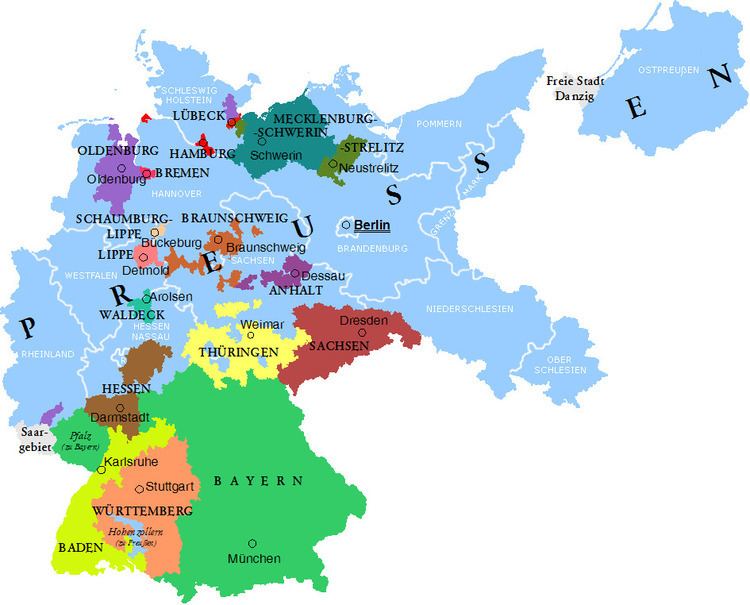Founded 1909 | Folded 1923 Level on pyramid Level 1 | |
 | ||
State | ||
The Kreisliga Bayern (English: District league Bavaria) was the highest association football league in the German Kingdom of Bavaria and, later, the state of Bavaria from 1909 to 1923. The league was disbanded with the introduction of the Bezirksliga Bayern in 1923.
Contents
1907 to 1914
The league was formed in a move to improve the organisation of football in Southern Germany in the early 1900s. Within the structure of the Southern German football championship, four regional leagues were gradually established from 1907, these being:
In 1909, a first Ostkreis-Liga (English: Eastern District League) was established, consisting of only four clubs and playing a home-and-away season, these clubs being:
The winner of this competition, Bayern Munich, advanced to the Southern German championship, which in turn was a qualifying competition for the German championship. The Bavarian clubs from the Palatinate never played in the same league as the clubs from the "mainland", instead, they were part of the Westkreis-Liga. Previous to the new Ostkreis-Liga, regional competitions with a finals round were played but this was not truly an all-Bavarian competition as only clubs from the mayor citys took part.
The following season, 1910–11, a proper league with ten clubs was established, the teams again playing a home-and-away season. Parallel, the other three Southern Kreisligas were organised in a similar fashion with the four regional winners playing for the southern title. In the following season, the league was expanded to eleven teams but the modus remained the same.
For the 1912-13 season, the league was reduced to eight teams. It remained unchanged for its last pre-First World War season in 1913-14.
1914 to 1919
The outbreak of war in August 1914 lead to a suspension of all football competitions. Initially it was thought that the war would not last long but when it became evident that this was not so, competitions were restarted with players too young or too old to be drafted to the military. In any case, a 1914-15 championship was not held. A 1915-16 championship was held on regional level with a Bavarian final rather than a league, a system in place for 1916-17 and 1917-18 as well.
1919 to 1923
With the collapse of the German Empire in 1918, no Bavarian championship was played in 1918-19 but football returned to a more organised system in 1919, similar to the one used before the war.
Southern Germany, now without the Alsace region, which had to be returned to France, was sub-divided into ten Kreisligas, these being:
Bavaria was sub-divided into two Kreisligas, north and south, with ten clubs each. Both league winners advanced to the Southern championship. This system applied for the 1919-20 and 1920-21 season.
In 1921-22, the two regional divisions were in turn split into two groups of eight, increasing the number of tier-one clubs in Bavaria to 32. The four league winners then played a semi-final and final to determine the Bavarian champion. This "watering down" of Bavarian football lasted for only one season, in 1922-23, the number of top clubs was halved and the league returned to a northern and southern division, now with eight clubs each. The two league winners played a Bavarian final once more.
In 1923, a league reform which was decided upon in Darmstadt, Hesse, established the Southern German Bezirksligas which were to replace the Kreisligas. The best four teams each from the north and south of Bavaria were admitted to the new Bezirksliga Bayern.
Southern German championship
Qualified teams and their success:
